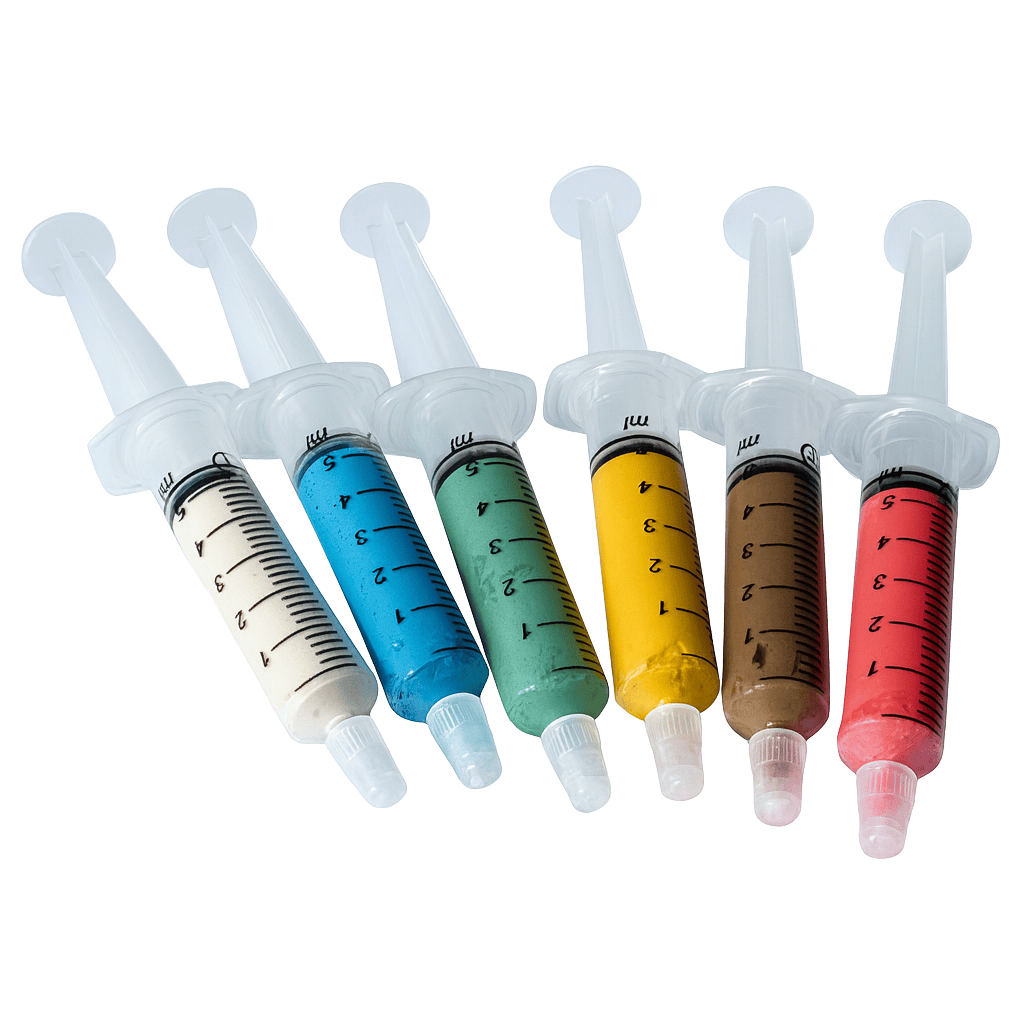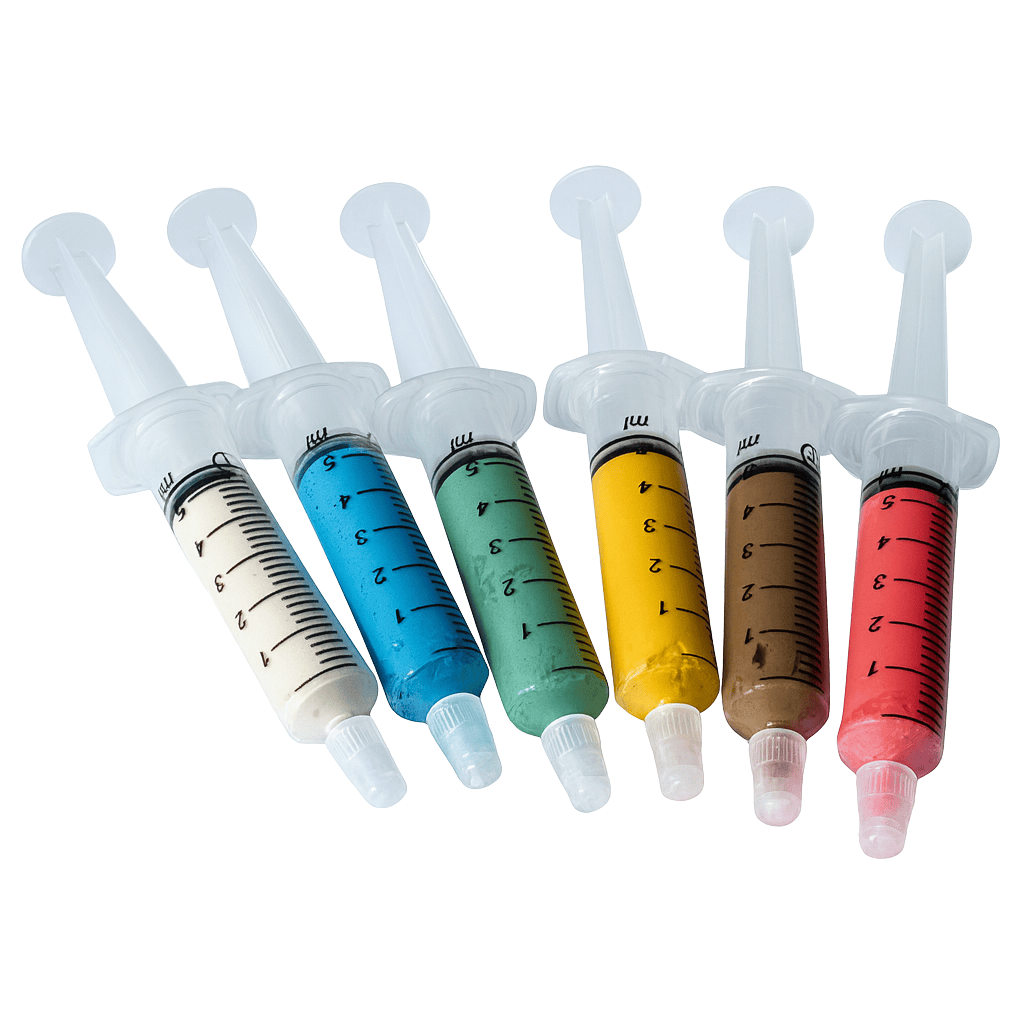- Home
- Clock Making Supplies
- Diamond Polishing Paste 0.25–90µm for Metal & Glass
Diamond Polishing Paste 0.25–90µm for Metal & Glass
Diamond Polishing Paste 0.25–90µm for Metal & Glass
Eternal Tools
SKU:DGP1025
If you want to achieve a mirror finish or remove scratches and marks on glass, stone, minerals, or metals, our diamond polishing paste is essential. Available in 9 different micron (µm) grades, from super fine to extra coarse, it can quickly transform a relatively coarse and grained piece of work into a superb mirror finish.
The diamond grinding paste is pre-mixed with a water-soluble oil and comes in an easy-to-apply 5g syringe, so the paste is ready to use and easy to apply. Diamond Paste for polishing is for use on glass, hard metals, ceramic and mineral surfaces to give a superfine mirror finish. Made in the UK.
- 0.25 - 3µm for final polishing
- 6 - 14µm for lapping and pre-polishing
- 25 - 90µm for rapid stock removal
Our diamond lapping paste has a shelf life of 2 years from the date of purchase. It is made fresh in the UK with each new batch. We have a regular stock turnaround, so you can be sure the polishing paste you purchase is fresh.
Read on for further information on the application Diamond Polishing Compound uses and a Micron to Grit conversion chart.
Couldn't load pickup availability
Description
Description
Micron (µ), Grit (#) & Mesh Conversion Chart
Diamond Polishing Paste Grades:
| Micron | Grit | Mesh |
| 0.25 | 100,000 | 0-0.5 |
| 1 | 14,000 | 0-2 |
| 3 | 8,000 | 2-4 |
| 4 | 5000 | 2-6 |
| 5 | 4,500 | 4-6 |
| 7 | 2,800 | 5-10 |
| 9 | 1,800 | 6-12 |
| 14 | 1,400 | 8-20 |
| 25 | 800 | 20-30 |
| 45 | 325 | 40-50 |
| 90 | 225 | 80-100 |
Why Choose Our Diamond Polishing Paste?
- UK-made & always fresh stock (2-year shelf life)
- Nine micron grades for every stage: 0.25–90µm
- Easy-apply 5g syringe, water-soluble carrier
- Effective on metals, glass, ceramics & gemstones
- From rapid stock removal to a true mirror polish
What Can You Use Diamond Polishing Paste For?
Polishing Glass & Removing Scratches
- Restore watch/optical glass and fused glass edges
- Improve stubborn marks on stove glass
- Smooth and polish sea glass surfaces
Jewellery & Precious Metals
- High mirror polish on silver and gold
- Final finishing after scratch removal
- Ideal for fine detailing and small components
Engineering & Precision Work
- Lapping and pre-polishing of hard metals
- Polishing ceramics and mineral surfaces
- Laboratory/optical work needing ultra-smooth finishes
How to Use Diamond Polishing Paste
Alternatively, apply to a soft wheel using a canvas belt, one belt for each grade.
The finer grades, such as 0.25µ of diamond paste, will absorb into wool, felt or material, so be sure to apply these with wood, leather or plastic.
- Use on silver: In recent tests, it has been found that using the 8 micron first, followed by the 3 micron and finishing with the 1 micron leaves a wonderful mirror finish to silver.
- Many scientists use the 0.25 micron to give a microscopic ultra-smooth finish and this grade is often used for polishing optical glass
- Ideal for removing scratches on: watch glass, glass or gemstones. Try starting with 6 micron (yellow) then 3 micron (green) and so on until the desired finish is achieved.
- 14 micron paste is excellent as a glass cleaner on stubborn scratches on the glass of Wood Fire Burning Stoves.
- Looking to remove the frosted appearance on sea glass? 45 micron paste will do the trick.
- For glass engraving, use the diamond paste for the final polishing stages, applying a tiny amount to a felt bob or point.
- Use finer grits such as 1 micron to restore and polish jewels or for a superfine polish after removing scratches.
- Our diamond grinding paste will also restore the shine to fused glass edges.
Diamond paste for polishing is done progressively, starting with a coarser grade, i.e. 6 microns, and then finishing with the 1 or quarter micron grade. If the work you are polishing is already of a reasonable finish, then you can often skip the coarser grades and start with the 3 or 1 micron.
Technical
Technical
KD-C1 Diamond powder in water soluble oil
- Plastic Syringe: 5g
- 0.25 - 3 micron: for final polishing
- 6 - 14 micron: for lapping and pre-polishing
- 25 - 90 micron: for rapid stock removal
Customer Reviews
Customer Reviews

Delivery popup
£3.99 delivery via 1st Class Post
FREE on Orders over £60
Orders placed before 3pm despatched same day
£8.99 delivery next working day on orders placed Mon - Thurs before 3pm


